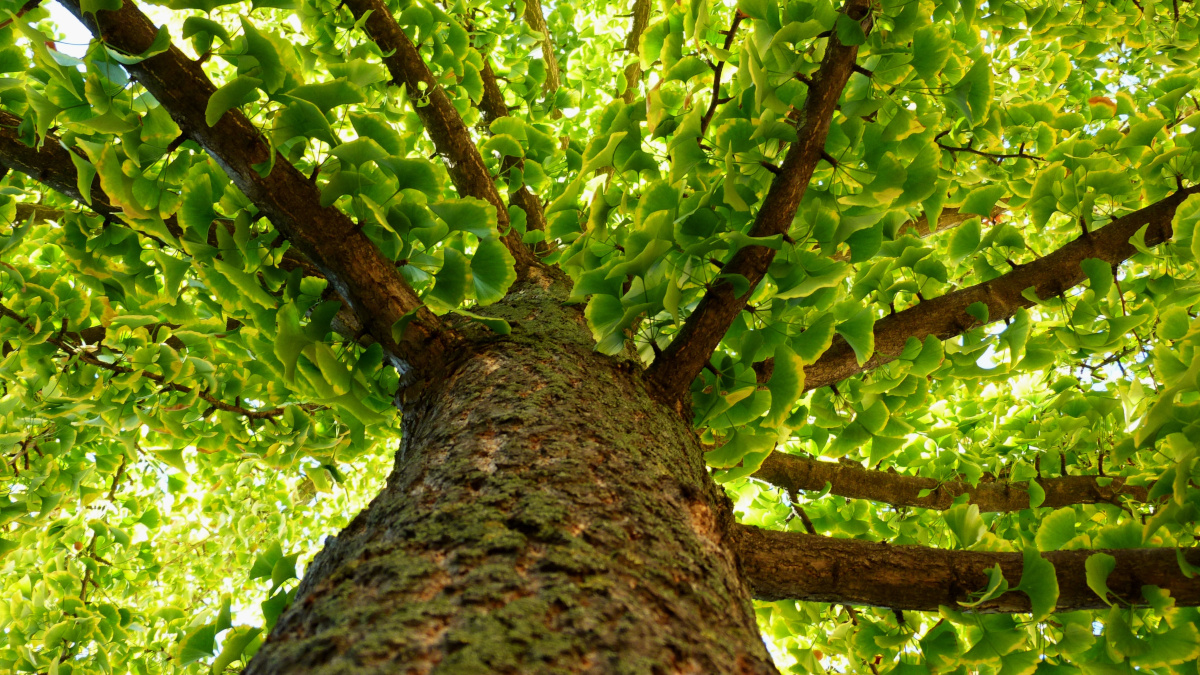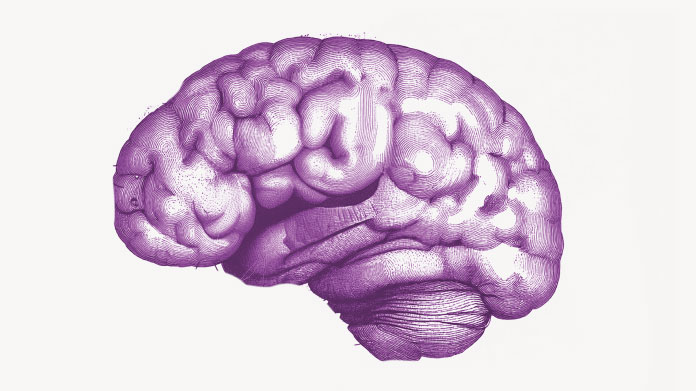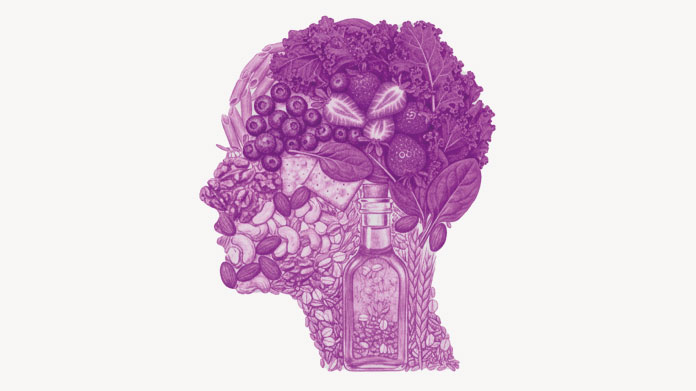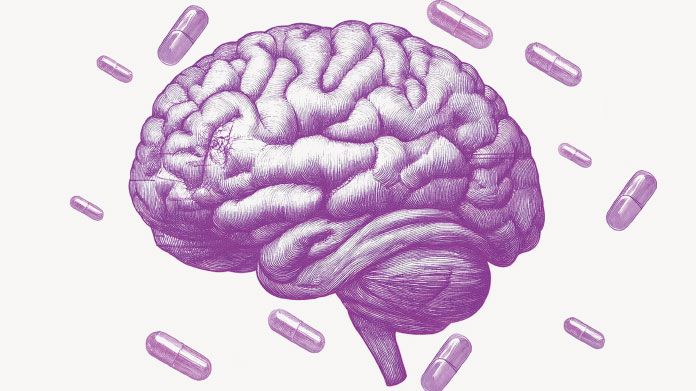Ginkgo biloba: the benefits of the oldest tree in the world
Ginkgo dates back some 270 million years, predating even flowers and dinosaurs, and has been used for more than 4000 years in Chinese medicine. Discover all that this multi-beneficial tree has to offer ...

A sacred tree and ‘living fossil’, with a fascinating mode of reproduction
Also known as the ‘tree of the 40 shields’ or Silver Apricot tree, Ginkgo biloba is endlessly fascinating, not only for its ability to survive over millions of years but also for its unusual system of reproduction, especially as it predates the advent of flowers and other spermaphytes (seed plants) (1).
The stems of female ginkgo trees do not develop flowers and seeds but ovules, loaded with nutrient reserves, which fall to the ground and secrete a droplet of resin designed to capture a grain of pollen. Released by male ginkgo trees, this pollen is carried by the wind and attaches itself to the ovules, thus fertilising them and creating a new embryo.
Invincible, the ginkgo has survived the extinction of dinosaurs, Hiroshima...
What’s more, when the tree is around 100 years old, it develops protrusions which grow downwards and form stalactite-type nodules named chichi icho by the Japanese (2), meaning ‘ginkgo breasts’. Once they reach the ground, these growths take root, making the tree virtually immortal.
Existing since the dawn of time, Ginkgo biloba has no predators, and seems immune to both disease and destructive pests. It has outlived the dinosaurs and survived various Ice Ages. It is resistant to pollution, all forms of toxicity and even radiation. Ginkgo is the only tree to have survived the atomic bomb dropped on Hiroshima.
The oldest specimen of Ginkgo biloba, which is found in China, may be more than 3500 years old. Indeed, it is because of this longevity, testimony to the tree’s incredible ability to adapt to its environment and evolve to ensure its survival, that it has long been viewed as sacred in China and Japan.
Its age-old use in the traditional Chinese pharmacopoeia has led Western scientists to study its benefits. And there are many of them ...
The active principles in Ginkgo biloba
A number of studies have been conducted to identify the active principles in the leaves of ginkgo biloba, the sole part of the tree to have been used medicinally over millennia.
These studies have revealed that the important constituents of its leaves include terpene trilactones, ie, ginkgolide A, B, C, J and bilobalide, numerous flavonol glycosides, biflavones, proanthocyanidins, alkylphenols, simple phenolic acids, 6-hydroxykynurenic acid, 4-O-methylpyridoxine and polyprenols (3).
Ginkgo’s main benefits
Numerous studies suggest that these active principles have multiple positive effects, especially on circulation and microcirculation, and particularly in the brain.
More specifically,ginkgo extract may help to:
- support good circulation(4) ;
- maintain memory and improve cognitive ability (which is why we include it in our supplements Smart Pills and Neurex) (5) ;
- maintain good balance of the nervous system and good mental equilibrium (6) ;
- support peripheral circulation which is particularly important for the eyes and ears (hence its inclusion in our supplements Hear Loss Formula and OptiHear) (7) ;
- and protect cells from oxidative stress(8).
To ensure a good intake of ginkgo and thus benefit from its properties, we recommend taking our famous Ginkgo biloba supplement, which contains an extract ofGinkgo biloba with a high content of active principles.
Living fossil, symbol of longevity, sacred tree used for thousands of years, Ginkgo biloba clearly deserves a place in any supplementation regimen aimed at maintaining fitness and withstanding the ravages of time, particularly for its effects on microcirculation and cognition.
References
- B. Singh, P. Kaur, Gopichand, R.D. Singh, P.S. Ahuja, Biology and chemistry of Ginkgo biloba, in Fitoterapia, Elsevier, September 2008.
- K. Fujii, On the Nature and Origin of so-called “Chichi” (nipple) of Ginkgo biloba, L., Shokubutsugaku Zasshi, 1895, Volume 9, Issue 105, Pages 440-444, Released April 05, 2007, Online ISSN 2185-3835, Print ISSN 0006-808X
- Teris A van Beek, Chemical analysis of Ginkgo biloba leaves and extracts, Journal of Chromatography, Elsevier, August 2002
- https://eurekasante.vidal.fr/parapharmacie/phytotherapie-plantes/ginkgo-biloba.html
- Ahlemeyer, B., Krieglstein, J. Neuroprotective effects of Ginkgo biloba extract. CMLS, Cell. Mol. Life Sci. 60, 1779–1792 (2003). https://doi.org/10.1007/s00018-003-3080-1
- Reay JL, van Schaik P, Wilson CJ. A systematic review of research investigating the physiological and psychological effects of combining Ginkgo biloba and Panax ginseng into a single treatment in humans: Implications for research design and analysis. Brain Behav. 2019;9(3):e01217. doi:10.1002/brb3.1217
- Dubreuil C. (1988) Therapeutic Trial in Acute Cochlear Deafness. In: Fünfgeld E.W. (eds) Rökan. Springer, Berlin, Heidelberg. https://doi.org/10.1007/978-3-642-73686-5_26
- Droy-Lefaix MT. Effect of the antioxidant action of Ginkgo biloba extract (EGb 761) on aging and oxidative stress. Age (Omaha). 1997;20(3):141-149. doi:10.1007/s11357-997-0013-1
Keywords
2 Days
Great product and it arrives quickly.
Great product and it arrives quickly.
SOMMARIVA Gianni
3 Days
Excellent products and fast service.
Excellent products and fast service. What do we need more?
Margarida
7 Days
The variety of products is amazing
The variety of products is amazing, the offers are good and the sending is very fast. I just miss having a bit more of guidance about combinations, possible interactions, etc.
Maria Angeles Verdu
8 Days
It was quick
It was quick.
Timo Antero
11 Days
Who is a good boy? You, you are! Yes, yes
:) :(:) :(:) :(:) :(
JORGE Catalan Gasco
13 Days
Excellent online site
Excellent online site, efficient and quick delivery. A great experience.
Chris
16 Days
I’m really happy with your products, but…
I’m really happy with your products. Indeed, I’ve been a customer of SuperSmart for a long time. However, I believe that lately you’ve made a significant mistake in choosing Poste Italiane for your deliveries. Poste Italiane is now over loaded and assigns the deliveries to small local companies that have grown like mushrooms because of this business. However, the service they provide is very poor. They let you know about the delivery date just the evening before, with no time to organize yourself, many times you receive a message saying that they tried to deliver but you were not home and in reality they haven’t come at all and, when they do come, you open the door of the building ( I live on the 3rd floor) and when you get downstairs they have already left, leaving the pack inside but right behind the glass door instead of at least putting it on top or under the letterbox. This is not just a one time event but it’s their way of proceeding. It would be worth hiring a professional currier. Thanks
Olga Gladys Del Signore
17 Days
Good products
Good products, fast service
Mrs I Heinrich
23 Days
Quality products and fast shipping.
Quality products and fast shipping.
JF
25 Days
Everything is great. Keep up
Your product and service is great that's why i ordered again.
KOSMATOS Stamatios
28 Days
everything as expected
the products work and the processes to support them also
Ruggero Benedetto
30 Days
Excellent products always up to date…
Excellent products always up to date with the latest developments.
Olga Gladys Del Signore
34 Days
Great service
Great service, exceptional delivery time.
Chris
36 Days
Excellent quality of Super Smart
I’ve used Super Smart products for a long time and since the very beginning I have been absolutely keen about their punctuality in delivering but, most of all, I appreciate the quality of their products and the constant updates following the results of proven research.
Olga Gladys Del Signore
39 Days
Slow post
You have a very good range of quality products, and service is usually good. However delivery was slow due to using the national postage company. Correos. Regards David
David Walsh



